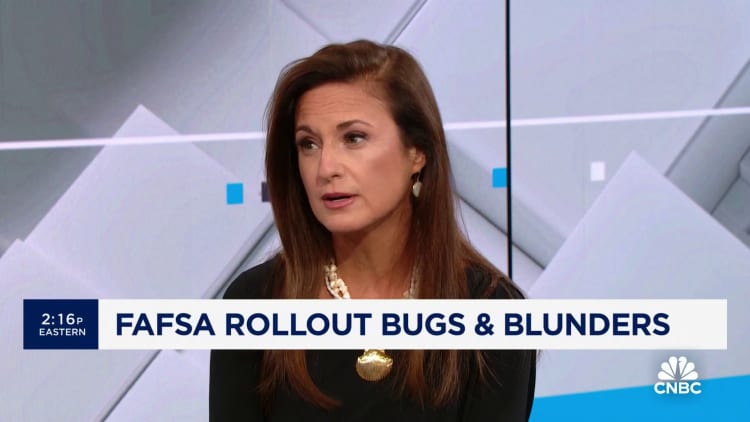As of Monday, the U.S. Department of Education is restarting “involuntary collections” on federal student loans that are in default, which may seriously damage the credit scores of millions of borrowers.
Student loan collections efforts have largely been on pause since the pandemic began in March 2020. A new analysis by TransUnion found that consumers who faced default in recent months have seen their credit scores fall by 63 points, on average. For super prime borrowers — or those with credit scores above 780 — who were seriously delinquent, scores sank as much as 175 points. Credit scores typically range between 300 and 850.
“Consumers may find themselves shocked by the dramatic and immediate impact that a default can have on their credit scores,” Joshua Trumbull, senior vice president and head of consumer lending at TransUnion, said in a statement.
More from Personal Finance:
Trump administration restarts student loan collections
What loan forgiveness opportunities remain under Trump
Is college still worth it? It is for most, but not all
The credit score implications worsen for borrowers with better scores, research shows. “The bigger they are, the harder they fall,” said Ted Rossman, senior industry analyst at Bankrate.
Because borrowers in less risky credit tiers typically have fewer dings on their credit, any derogatory mark “has the potential to have a significant and jarring impact,” according to TransUnion. In general, the higher your credit score, the better off you are when it comes to getting a loan.
“Somebody with excellent credit could see a drop of 100 points or more — that’s massive,” Rossman said. “That’s going to make it hard to even get credit and if you do, you will face a sharply higher interest rates on everything from mortgages to car loans.”
As collection activity resumes, the federal government can seize some or all of certain federal payments including tax refunds and Social Security benefits as well as withhold a portion of borrowers’ paychecks.
“Borrowers who don’t make payments on time will see their credit scores go down, and in some cases their wages automatically garnished,” U.S. Secretary of Education Linda McMahon wrote in a Wall Street Journal op-ed last month.
The Federal Reserve Bank of New York cautioned in a March report that student loan borrowers who are late on their payments could see their credit scores sink by as much as 171 points.
Initially, those borrowers benefitted from the pandemic-era forbearance on federal student loans, which marked all delinquent loans as current. Median credit scores for student loan borrowers rose by 11 points between the end of 2019 to the end of 2020, the Fed researchers found. However, that relief period officially ended on Sept. 30, 2024.
“We expect to see more than nine million student loan borrowers face substantial declines in credit standing over the first quarter of 2025,” the Fed researchers wrote in a blog post.
“Although some of these borrowers may be able to cure their delinquencies,” the Fed researchers said, “the damage to their credit standing will have already been done and will remain on their credit reports for seven years.”
Lower credit scores could result in reduced credit limits, higher interest rates for new loans and overall lower credit access, the researchers also said.
Both VantageScore and FICO reported a drop in average scores starting in February as early- and late-stage credit delinquencies rose sharply, driven by the resumption of student loan reporting. Borrowers who are late on their payments could see their credit scores tank by as much as 129 points, VantageScore reported at the time.
Currently, around 42 million Americans hold federal student loans and roughly 5.3 million borrowers are in default, according to the Education Department. Another 4 million borrowers are in “late-stage delinquency,” or over 90 days past due on payments.
One in five student loan borrowers were reported as being over 90 days past due by the end of February, the data from TransUnion showed.
“It’s surprising how many people who should be paying have been reported as not paying,” said Michele Raneri, vice president and head of U.S. research and consulting at TransUnion, and those “delinquencies will likely tick higher.”
Subscribe to CNBC on YouTube.


 Accounting1 week ago
Accounting1 week ago
 Economics1 week ago
Economics1 week ago
 Economics1 week ago
Economics1 week ago
 Personal Finance1 week ago
Personal Finance1 week ago
 Economics1 week ago
Economics1 week ago
 Personal Finance1 week ago
Personal Finance1 week ago
 Finance2 days ago
Finance2 days ago
 Finance1 week ago
Finance1 week ago












